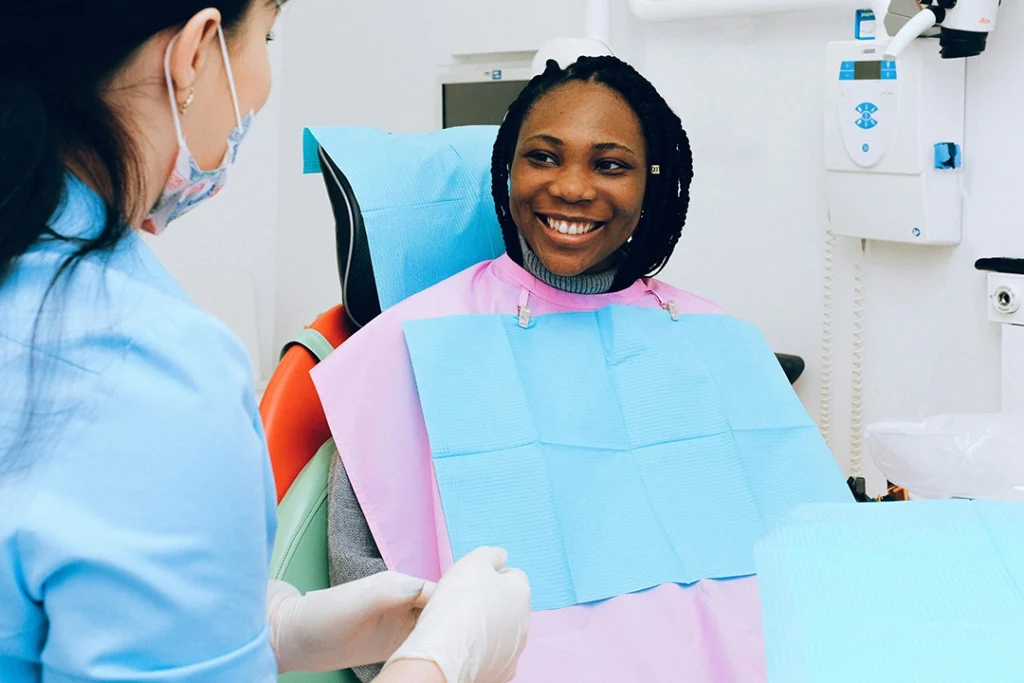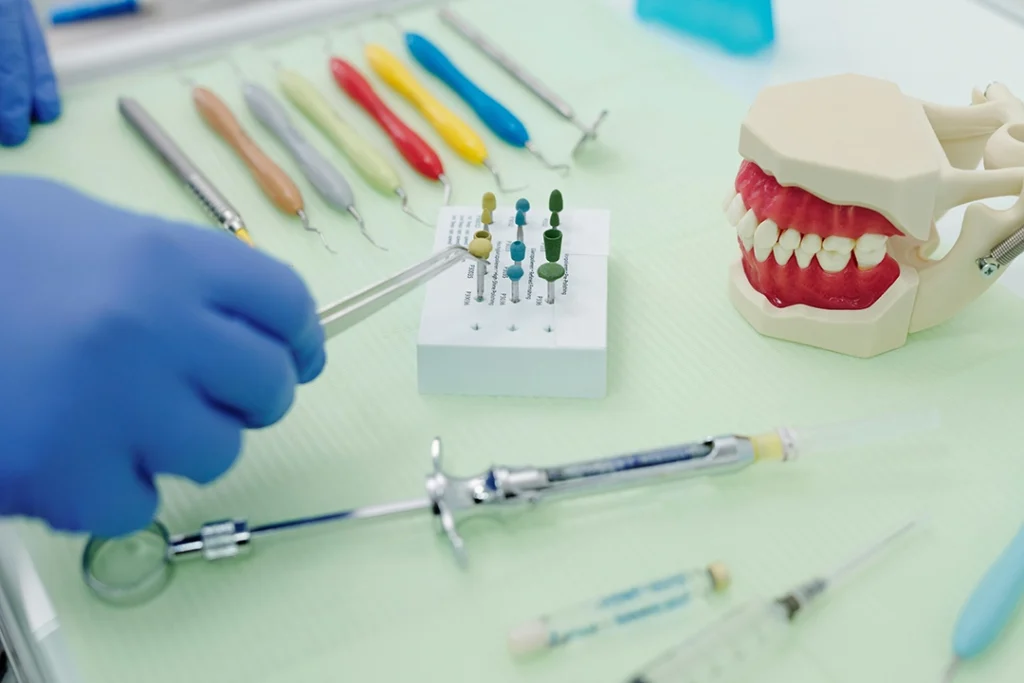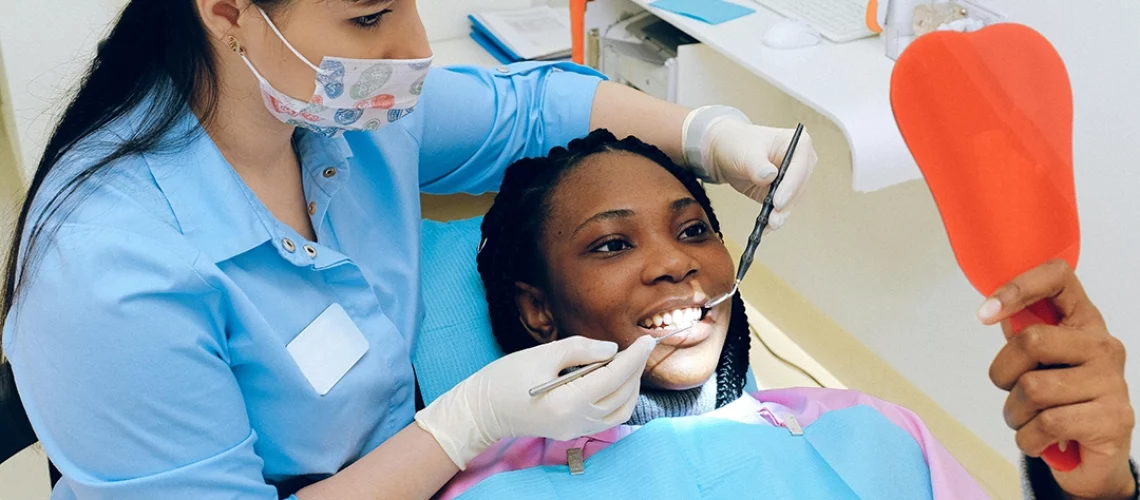If you’re looking to achieve a movie star smile, dental restorations may be necessary to address dental injuries and common imperfections, especially as we age. At Cedar Creek Dental in Rigby, ID, our skilled dental team provides a range of restorative dental procedures to help you attain a healthier and more appealing smile. One such procedure is dental bonding, which can be completed quickly and easily.
What Is Dental Bonding?
Dental bonding is an effective and affordable cosmetic dental procedure that can quickly repair damaged teeth. During the tooth bonding process, a thin layer of tooth-colored composite resin bonding material is applied to the surface of the damaged tooth. Then, a specialized ultraviolet light is used to harden the material, resulting in an improved tooth appearance. Dental bonding is a popular dental treatment that can address various oral health issues, such as;
Decay and Cavities
Cracked tooth
Chipped tooth
Severe discoloration
Misshapen teeth
Gaps
Exposed roots

Dental Tooth Bonding Procedure
Cosmetic tooth bonding is a convenient and relatively pain-free restorative dental procedure often done in a single appointment, including during a routine dental exam. Here’s what you can expect during your dental tooth bonding procedure with Dr. Mikesell and his team:
Preparation: Most patients won’t need anesthesia for dental bonding, so no fasting or medication is required. However, conscious sedation may be used if the tooth is severely decayed or close to a nerve. Usually, Dr. Mikesell will choose the suitable color composite resin to match your natural teeth.
Bonding Procedure: During this cosmetic dental procedure, Dr. Mikesell will prepare the tooth’s surface by carefully roughening it and applying a conditioning liquid. Then, he’ll use the tooth-colored, putty-like resin and shape it to match the desired size, position, and shape. After the resin has hardened, he’ll make any final adjustments and polish the tooth until it blends in with your surrounding teeth.
Amount of Time: Tooth bonding usually takes between 30 minutes and one hour per tooth, depending on your dental condition and needs.
Who Is a Good Candidate for Dental Bonding?
Tooth bonding is a convenient and efficient way to repair chipped, cracked or damaged teeth for many people. However, it’s not a suitable treatment for everyone. Tooth bonding should not be used to address severely decayed teeth, one or more missing teeth, or major tooth injuries.
Furthermore, patients who plan to have a professional tooth whitening treatment should be aware that tooth bonding should only be used for those who are satisfied with the color of their teeth. It’s a good idea to have your teeth whitened before tooth bonding because while professional whitening can effectively lighten the shade of your natural teeth, it won’t have the same effect on your bond. In addition, whitening your teeth after having a bond placed can lead to unwanted tooth discoloration or two-toned teeth.

Dental Bonding Benefits
Tooth bonding has several benefits. These include:
Improving the natural beauty of one or more damaged or discolored teeth.
Being a minimally invasive procedure: your tooth’s integrity won’t be altered in any way.
Being a painless procedure that does not require anesthetics.
Being quick and convenient: you can achieve a more attractive smile in just one dental appointment.
Being durable: tooth bonding can last up to ten years with good oral hygiene habits.
Dental Bonding Disadvantages
Dental teeth bonding has many advantages; however, it also comes with some disadvantages. These include:
Not being as stain-resistant as other dental restorations, such as crowns
Being more prone to chipping or breaking than veneers
Not being as strong or long-lasting as fillings, veneers, or crowns
Tooth bonding is an excellent option for minor cosmetic concerns in low-bite pressure areas, especially front teeth. However, they shouldn’t be used for significant oral health concerns.
Risks of Dental Bonding
Compared to other dental restorations like veneers, dental bonding is considered very safe because it is minimally invasive and does not alter the shape or integrity of your natural tooth. This means very few risks are involved in having a tooth bonded. The composite resin used in tooth bonding is also more robust and less likely to chip than other options like dental crowns or veneers.
Another advantage of cosmetic dental bonding is that the resin can be easily fixed or modified if needed. This is because the bonding material is not as thick as a dental crown or veneer and therefore requires less removal of the natural tooth. Additionally, because bonding does not require using a dental lab like veneers, it can be completed in just one appointment. Overall, cosmetic bonding is a safe and effective option for restoring the beauty and functionality of your teeth.
What Is the Difference Between Tooth Bonding and Veneers?
Veneers and dental bonding are cosmetic dental treatments that aim to improve the appearance of damaged front teeth, but there are some differences between them. Veneers are made of porcelain and very thin shells placed over damaged teeth like caps. They are best used for more significant damage to teeth, while tooth bonding is better suited for minor oral concerns. Veneers are known for their durability and can often last a lifetime with good oral hygiene practices.

How to Care for Your Bonded Tooth
Maintaining good oral hygiene practices is essential to keep your dental bonding looking and feeling great. While cosmetic bonding can restore the look of your tooth, the composite resin used is not as strong as natural tooth enamel. Therefore, it’s essential to be careful with your bonded tooth to avoid damaging it. Here are some practical tips to care for your bond:
Brush your teeth twice a day to remove plaque and bacteria.
Floss and use mouthwash daily to clean between teeth and along the gumline
Avoid using tobacco products that stain your teeth and harm oral health.
Do not bite down on complex objects like ice or fingernails or hard foods like candy or raw vegetables, as this can damage your bonded tooth.
Limit your intake of stain-causing foods and drinks such as red wine and black coffee, as whitening your teeth after bonding can cause uneven color.
Visit your dentist twice a year for routine exams and cleanings to ensure that your oral health remains in excellent condition.
Contact your dentist immediately to prevent further damage if you notice any unusual sensations or sharp edges on your bonded tooth.
Enhance Your Smile at Cedar Creek Dental
Transforming the look of your damaged or chipped teeth is a breeze with a single visit to Cedar Creek Dental. Our welcoming team provides cosmetic and restorative dental services, including teeth bonding. Dental cosmetic bonding is an efficient, cost-effective, and hassle-free way to enhance the beauty of your front teeth. You no longer need to feel self-conscious about your smile. Schedule a free consultation today to explore how the dental bonding procedure can work wonders for you. Then, get ready to show off your radiant smile again! To learn more about the benefits of tooth bonding and to schedule a free consultation with Dr. Mikesell.


